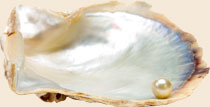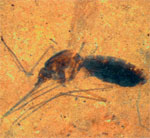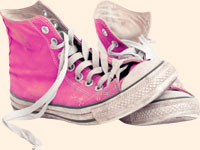Science: dizzy? Ballet may offer the cure

Simply sign up to the Life & Arts myFT Digest -- delivered directly to your inbox.
Spin your body around rapidly for three or four turns and you will almost certainly feel dizzy and sick – unless you are an experienced ballet dancer.
Research at Imperial College London is beginning to solve the mystery of how dancers can twirl so quickly with little or no dizziness. After years of training, the brain adapts to pirouettes by suppressing signals from the balance organs in the inner ear.
The neuroscientists say their work, published in the journal Cerebral Cortex, could lead to better treatments for patients who suffer dizziness in everyday life. About a quarter of people are affected by this at some point in their lives.
In healthy people rotational dizziness comes from the vestibular organs in the ear that control our balance and enable us to keep looking at something as we turn our head. These chambers sense rotation through tiny hairs that detect movement in the fluid that fills them. When you spin rapidly and then stop, the fluid continues to move and you feel that your head is still turning – the sensation of dizziness.
When ballet dancers train, they use “spotting” to combat dizziness. As a dancer turns, she keeps looking at a particular spot for as long as possible. This involves rotating the body and head at different rates: the body rotates at a constant speed, while the head periodically turns quickly and then stops, so that the dancer can gaze at a single location.
The study involved 29 ballerinas and a comparison group of 20 female rowers. It showed that while spotting helps dancers to fight dizziness, it is not the whole story.
Pearl wisdom

Scientists at the Swiss Federal Institute of Technology, Zurich, have developed a non-destructive DNA test for pearls. It shows which of the several closely related species of pearl oyster produced them.
The subjects were spun round in a chair in a dark room and then turned a handle to indicate how fast they felt they were still spinning after the rotation stopped. The researchers also measured the subjects’ eye reflexes triggered by input from the vestibular organs and, later, examined their brain structure with MRI scans.
As expected, the dancers’ perceptions of spinning and eye reflexes ceased more quickly. But in the control group the spinning sensation closely matched eye reflexes, while in the dancers they were uncoupled – the feeling stopped before the eye movement.
The scans showed a difference between the two groups’ brains. The part of the cerebellum that processes sensory input from the vestibular organs was smaller in the dancers. “Their brains adapt over years of training to suppress that input,” explains Barry Seemungal, the study leader. “Consequently, the signal going to the brain areas responsible for perception of dizziness in the cerebral cortex is reduced.
“If we can target that same brain area or monitor it in patients with chronic dizziness, we can begin to understand how to treat them better,” he adds.
——————————————-
To sleep, perchance to dispose of waste …
Philosophers and scientists have debated the purpose of sleep since the ancient Greeks. Many modern explanations focus on the information-processing side of the brain – for example, storing and consolidating memories during dreams – but research at the University of Rochester, New York, suggests a more prosaic answer: waste disposal.
The study, published in Science, shows that a recently discovered waste disposal system in the brain is active mainly during sleep. “The restorative nature of sleep appears to be the result of the active clearance of the byproducts of neural activity that accumulate during wakefulness,” says Maiken Nedergaard, lead author.

The glymphatic system, as it is known, clears away toxic proteins and other cellular waste, including amyloid beta, which builds up in Alzheimer’s disease. It pumps cerebrospinal fluid (CSF) through the brain and flushes waste back into the circulatory system and eventually into the liver for disposal. Almost every neurodegenerative disorder is associated with the accumulation of cellular waste products.
One clue that the glymphatic system is active during sleep came from the fact that the brain’s energy consumption does not decrease much during that period. The researchers speculate that pumping CSF requires a lot of energy, which may not be compatible with the brain’s waking workload.
“The brain only has limited energy at its disposal and it appears that it must choose between two different functional states: awake and aware or asleep and cleaning up,” says Nedergaard. “You can think of it like having a house party. You can either entertain the guests or clean up the house, but you can’t really do both at the same time.”
——————————————-
Blood-filled mosquito fossil discovered
It’s not Jurassic Park but it may be a step in that direction. Palaeontologists have found the first fossil of an ancient mosquito with a blood meal in her abdomen.
A team from the US National Museum of Natural History in Washington DC reports the discovery of the 46-million-year-old insect in Proceedings of the National Academy of Sciences.

It is a little younger than the fictional one in Michael Crichton’s novel, from which scientists extract dinosaur DNA. The real fossil dates from 20 million years after the dinosaurs and, unlike the Jurassic Park mosquito preserved in amber, it survived in shale sediments deposited in modern-day Montana. Nor is there any trace of DNA, though analysis shows markers from the breakdown of its last blood meal, including porphyrin molecules and iron from haemoglobin.
This evidence is not sufficient to identify the source of the blood in the mosquito, though its closest modern relatives feed on birds.
The PNAS paper describes what an amazing instance of survival the specimen represents: “The insect had to take a blood meal, be blown to the water’s surface and sink to the bottom of a pond [or lake] to be quickly embedded in fine aerobic sediment, all without disruption of its fragile distended blood-filled abdomen.”
——————————————-
Sole survivors: how to recycle your shoes
British scientists have built and tested a prototype for what they say would be the world’s first comprehensive system for separating and recovering useful material from old shoes. It can granulate and segregate leather, plastic foams and rubber, for reuse in products from playground surfacing to new footwear.

Loughborough University’s Innovative Manufacturing and Construction Research Centre developed the system, with funding from the Engineering and Physical Sciences Research Council.
“Footwear is incredibly difficult to recycle as it can contain up to 40 different types of material, many of which are stitched or glued together,” says Shahin Rahimifard, project leader. “In our process, the first, manual step is to presort shoes into broad types, such as trainers, and to recover metals, such as eyelets. Next the shoes are automatically shredded and granulated, with the granules automatically separated into four waste streams: leather, foams, rubber and other material.”
A granulator turns the shoes into 3mm-4mm fragments then a cascade of air-based technologies separates the materials by exploiting their different densities and other characteristics.
The Loughborough team is now in talks with a recycling company and is working with manufacturers to explore how shoes could be designed differently to make them easier to recycle.
Currently 95 per cent of the 20 billion pairs of shoes produced globally each year end up in landfill sites.
Comments